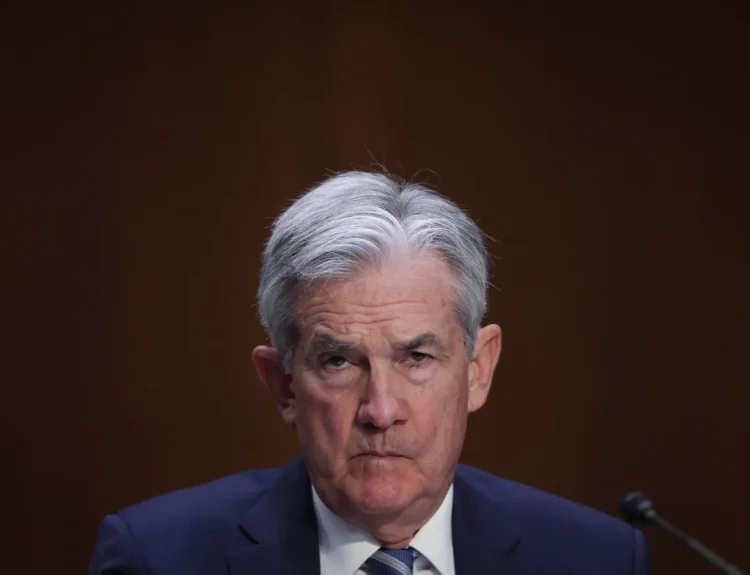Tencent is ramping up its AI push—and the timing couldn’t be more critical.
With nearly 1.4 billion WeChat users and a gaming empire spanning everything from Clash of Clans to League of Legends, Tencent’s influence runs deep. Roughly twice the size of Alibaba and ranked as the 16th largest company in the world, the Chinese tech giant is taking it to the next level by rolling out its Hunyuan T1 model and funneling billions into GPUs and cloud infrastructure.
Why does this matter? Tencent’s sheer scale means any AI breakthrough here could shake multiple industries. If it successfully embeds advanced tech into its social platforms, payments, and gaming franchises, we might see a ripple effect that reaches far beyond China.
Let’s dive into Tencent’s latest moves at the AI table.
The ABCs of Tencent
Tencent is uniquely positioned with giant social platforms and a massive gaming audience on PC and mobile, combined with fintech and enterprise services.
If you’re not familiar, the company is the equivalent of a mash-up of business lines from Meta, PayPal, and Alphabet into one giant digital ecosystem.
- Wexin (WeChat) and QQ (instant message mobile platform) are in the center. These platforms connect users, content, and services. Again, Wexin alone has nearly 1.4 billion monthly active users.
- Weixin Mini Programs are lightweight app-like experiences embedded within WeChat, allowing users to access services—from shopping to gaming—without leaving the main app.
- Weixin Pay counts over 1 billion daily average commercial payment transactions.
- Weixin Video Accounts is Tencent’s take on TikTok and an increasingly crucial platform, ramping its monetization via in-feed ads, live streaming tipping, and e-commerce.


The company operates across four core segments:
- Online Games: With ~$28 billion in gaming revenue in 2024, Tencent was only second to Sony. Games are nearly a third of overall revenue, primarily through in-game purchases, season passes, and copy sales. Domestic games remain the main source, but International Games have expanded over time, from 3% of overall revenue in 2018 to 9% in 2024. In addition, the company has large minority stakes in Epic Games (Fortnite) and Ubisoft.
- Social Networks: WeChat and QQ generate revenue through subscriptions, membership privileges, and sales of virtual items.
- Marketing Services: Online ads on their platforms and partner websites. This includes display ads, video ads, and sponsored content.
- Fintech and Business Services: This segment includes revenue from WeChat Pay (Tencent’s mobile payment system), wealth management, other fintech services, and cloud and enterprise-facing services like Tencent Cloud.
Tencent reports its metrics in Renminbi (RMB). So, you would have to divide the number by ~7 to get the dollar amount. In FY24, revenue grew 8% Y/Y to RMB 660 billion ($92 billion).


To measure Tencent’s success, keep an eye on these factors:
- User Growth: Number of users on apps and services and how often they engage with the ecosystem. Keep an eye on MAU (monthly active users) and DAU (daily active users).
- Value-added services (VAS) lumps gaming and social media together. It refers to extra features and services beyond essential functions (micro-transactions in free-to-play games, messaging add-ons, and subscriptions).
- Gross Merchandise Value (GMV): Total value of transactions processed.
- Investments: Tencent unlocks shareholder value through its various stakes in smaller companies. As of June 2024, Tencent’s total investment portfolio size was around RMB 740 billion, or approximately $103 billion (17% of the company’s market cap).
Let’s look at the most recent quarter.
Insights from Q4 FY24
Key user metrics:
- Weixin & WeChat MAU: 1,385 million (+3% Y/Y).
- QQ Mobile device MAU: 522 million(-5% Y/Y).
Income statement:


- Revenue grew 11% Y/Y to RMB 172 billion ($24 billion).
- Online Games (29% of revenue) surged +20% Y/Y.
- Social Networks (17% of revenues) grew 6% Y/Y.
- Marketing Services (20% of total revenues) rose 17% Y/Y.
- Fintech and Business services (33% of total revenues) +3% Y/Y.
- Operating margin was 30% (+3pp Y/Y).
Balance sheet:
- Cash and investments: RMB 415 billion ($58 billion).
- Total debt: RMB 330 billion ($47 billion).
So what to make of all this?
- Strong quarter across the board: Tencent’s revenue rose 11% Y/Y, its fastest pace since 2023. Net income surged 90% to RMB 51 billion yuan (RMB 7 billion beat). Full-year net profit grew 68%, supported by gaming and advertising momentum.
- Gaming rebound: Domestic games revenue jumped 23% Y/Y, lifted by hits like Honor of Kings and Peacekeeper Elite. International games rose 15% Y/Y, led by PUBG Mobile, as Tencent doubled down on global expansion.
- Ad platform gets a lift from AI: Advertising revenue rose 17% Y/Y. WeChat’s growing user base and upgraded AI-powered targeting helped boost engagement and ad relevance, driving strong demand across video and search.
- Massive cash returns ahead: Tencent proposed a 32% dividend increase and plans to buy back at least HK$80 billion in shares in 2025 (over $10 billion). With a net cash position of $11 billion and $22 billion in free cash flow in FY24, the company is leaning into shareholder returns.
- Fintech steady, cloud in transition: Fintech and business services grew 3% Y/Y in Q4, held back by constrained cloud capacity due to internal GPU demand for AI inference (Yuanbao chatbot, WeChat AI features), leading to slower external cloud sales in Q4. Still, Tencent expects accelerated cloud revenue ahead as GPU supply improves.
- Games as evergreen franchises: Tencent is focused on turning breakout hits into long-term cash machines. Its pipeline includes major titles like Monster Hunter Outlanders and Goddess of Victory: Nikke (China release), aiming for more consistent growth after recent studio realignments.
- Cautious optimism for 2025: Management is prioritizing focus—scaling back game development teams and doubling down on monetization of proven franchises and AI-enhanced products. While Tencent trails Alibaba in investor buzz, it’s playing the long game.
Stepping up AI investments
AI has become the backbone of Tencent’s strategy. After years of steady progress, the company is doubling down on AI infrastructure, software, and services, positioning it as both a growth multiplier for existing businesses and a new revenue driver. Recent developments around its HunYuan family underscore just how serious this push has become.
Below are the five key pillars of Tencent’s AI roadmap, incorporating new details on its Hunyuan T1 release:
1. Building the HunYuan foundation model
Tencent’s proprietary HunYuan framework has evolved into a core AI platform—serving both consumers and enterprises. Initially focused on text and conversation, HunYuan now spans multimodal capabilities like image, video, and 3D generation, where it’s achieved top rankings in industry benchmarks.


Enter T1: The newly launched Hunyuan-T1 reasoning model joins this family as Tencent’s official contender in the global AI race. According to the company, T1:
- Boasts faster response times and ultra-low hallucination rates.
- Scored 87.2 on the MMLU Pro benchmark, beating DeepSeek R1’s 84 (but still trailing OpenAI’s latest releases).
- Charges a competitive 1 yuan per million tokens (input), matching DeepSeek’s daytime pricing—while offering similarly aggressive rates on output.
- Adopts a hybrid Mamba-Transformer architecture, cutting memory costs and boosting decoding speed by 200%.
By excelling in long-sequence processing, T1 aims to handle more complex tasks—anything from advanced customer service to research-level queries. It also underscores Tencent’s strategy of investing in fundamental AI capabilities that can be embedded across its ecosystem.
2. Adopting a multi-model strategy
While pushing its own models like T1, Tencent also embraces open-source or external AI tech. Management calls this a “double-core” approach, citing DeepSeek’s R1 model as a major complementary asset.
- Yuanbao chatbot taps into both HunYuan T1 and DeepSeek R1 for different strengths—like deep thinking versus rapid-fire answers.
- WeChat Search similarly leverages T1 for more accurate, context-aware results, while also pulling from DeepSeek.


Why go hybrid? Different models shine at different tasks. By mixing and matching, Tencent can quickly meet user demands—everything from short Q&A sessions to writing Chinese poetry—without reinventing the wheel.
3. Accelerating enterprise integration
AI isn’t just a consumer play. Tencent is layering AI across its cloud services to attract enterprise clients:
- Infrastructure: Offering GPU-driven AI capabilities for training and inference at scale.
- Platform: Tools like the TI Platform let businesses fine-tune large models with their own data.
- SaaS: Tencent Meeting (real-time transcription) and Docs (AI editing) highlight rapid adoption, with AI usage growing in the double digits.
2024 saw AI-related cloud revenue nearly double, although Tencent admits GPU constraints limited external sales. The recent step-up in GPU orders should relieve these bottlenecks, translating to faster enterprise revenue growth in 2025.
4. Unlocking growth in core businesses
Tencent’s bread-and-butter segments—advertising, gaming, and media—are already seeing an AI boost:
- Advertising: Neural networks and LLM-based targeting propelled 20% revenue growth in marketing services despite a tough macro climate.
- Gaming: AI helps with content creation, matchmaking, and in-game chatbots—extending the lifecycle of popular franchises.
- Content & Media: Automatic video editing, live streaming enhancements, and advanced recommendation engines increase user engagement with fewer human resources.
The logic? If AI makes it easier and cheaper to produce new game levels, show episodes, or ads, each of Tencent’s big profit centers gets a multiplier effect. We’ve seen this in our coverage of Meta.
5. Stepping up investment in AI
Capital commitments reflect Tencent’s confidence: CapEx soared 386% year-over-year to nearly $11 billion in 2024, driven mainly by server and GPU purchases. Management expects low-teens percentage of revenue to go into capital spending again in 2025—essentially doubling down on AI infrastructure. Note that this is still only a fraction of US Big Tech. For example, Meta plans $63 billion in FY25 CapEx.


This spending spree supports both internal services (like Yuanbao and WeChat AI features) and external cloud customers. To accelerate R&D, Tencent reorganized its AI teams into faster-moving units—one focusing on product delivery and another on deep model research. Despite the cost, executives see these outlays as critical long-term bets.
Looking ahead
Whether it’s HunYuan T1 rivaling DeepSeek R1 on speed and pricing or Yuanbao becoming the #3 AI app in Chinese app stores, Tencent believes it’s only scratched the surface of AI’s transformative potential. We’ve seen Meta and Alphabet leverage AI—not only improve engagement on their platforms but also improve ad performance. Tencent might be on its way to doing just that, extending T1’s capabilities into Mini Programs, multi-language customer service, and real-time ad optimization—unlocking more ways to monetize.
With billions of users across WeChat, gaming, and media, the company’s unique leverage lies in weaving AI into everyday digital habits—quietly, methodically, and at scale.
Source: How They Make Money
Disclosure: This article is for informational purposes only and does not constitute investment advice. Investors should conduct their own research and consult with a financial advisor before making investment decisions.
Related:
These Cars May Be More Expensive Under Trump’s Auto Tariffs
What Analysts Think of Tesla Stock Amid Tariff Tensions, Global Pressures, and Elon’s New Warning
Trump’s Auto Tariffs: Here’s How Every Major Carmaker Could Be Affected
Tariff Updates: Trump threatens ‘far larger’ tariffs
Here Are Attack Plans That Trump’s Advisers Shared on Signal
Nvidia’s China sales face threat from Beijing’s environmental curbs
Auto Stocks Fluctuate Amid Anticipation of New Trump Tariffs










